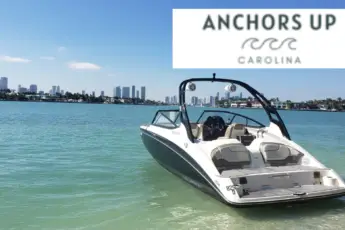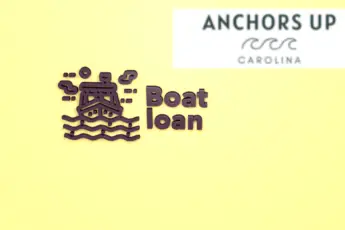One of the two most popular hull designs is the deep V and the flat bottom. These two styles of hulls are found widely in lakes, rivers, intercoastal waters, and oceans. I have had the opportunity to operate both and can tell you that they handle significantly differently. If you’re wondering what is better, a deep V hull or a flat bottom hull, here are the differences between the two.
What Is A Flat Bottom Hull
A flat bottom hull is exactly as it sounds. The hull is shaped more squarely than steeply angled.
A flat bottom is most often used in calm waters because it is not capable of breaking through waves. Instead, the hull rides on top, making it less stable. The stability issues arise from the fact that the boat is at the mercy of the wave.
From my personal experience, if you’re driving a flat bottom hull in rough seas, you can expect to take a pounding. For this reason, this type of hull should be used in areas with little to no wave action.
What Is A Deep V Hull
In comparison, a deep V hull is significantly different when compared to a flat bottom. The hull of a deep V is more wedged shaped as opposed to flat.
For this reason, a deep V slices through waves with ease compared to riding on top. Importantly, you can expect to take less of a pounding riding in a deep V.
The vast majority of boats that I have operated are a deep V. However, this is because I primarily run offshore and encounter waves. The flat bottom would not offer as comfortable of a ride or be as safe.
Who Should Buy A Flat Bottom Hull
If you’re in the market for a new boat, it is important to make the right decision the first time. Unfortunately, unlike buying a car, in most cases, you are not going to be able to take a boat for a test drive out of a dealership.
Without question, the flat bottom hulls are best suited for boaters who are operating on highly protected waters.
A flat bottom is perfect for small lakes, rivers, and coastal waterways because you are unlikely to encounter rough water. Most importantly, flat bottoms are able to run in extremely shallow water.
Remember, a deep V’s wedge shape draws more water compared to a flat bottom. If you’re running in areas with little depth, a flat bottom hull is a great option for you.
Who Should Buy A Deep V Hull
Right off the top, I can tell you that you’re going to want to buy a deep V if you’re operating in the open ocean.
Although I had a small center console, the hull was sharply angled, and for this reason, it could handle rough seas well.
The deep V will provide a much better ride for anglers, pleasure boats, or water sports enthusiasts who frequently venture outside of the inlets.
However, it should be noted that they are not capable of running in shallow water. If you have a waterfront dock with minimal water at low or high tide, you may need to reconsider the hull.
Cost Comparison Of A Deep V Vs Flat Bottom
Without question, boats come at costs that vary significantly. First and foremost, the bigger the boat, the higher the listing price.
In addition to size are the bells and whistles. The extras add up quickly; for example, selecting a premium electronics package over a standard package.
Interestingly, flat bottom hulls typically come at a lower cost than deep V boats. There are two specific reasons why flat bottoms are typically more affordable.
First, a flat bottom costs less to ship from the manufacturer to the dealership. Secondly, they are easier to build. When comparing the mold of a deep V hull compared to a flat bottom, they have fewer curves and require less material.
With that being said, if you have a budget in mind, you may want to consider buying a flat bottom.
So Is A Flat Bottom Or Deep V Better
The answer to which is better is highly dependent on your situation. If you’re not limited by budget and draft, I always recommend the deep V hull because they are more versatile. A deep V is more than capable of running in lakes, rivers, inland waters, and the open ocean. However, running a flat bottom offshore is not a good idea unless calm seas are expected. Ultimately, it’s up to you to decide what is best for you and your family.







